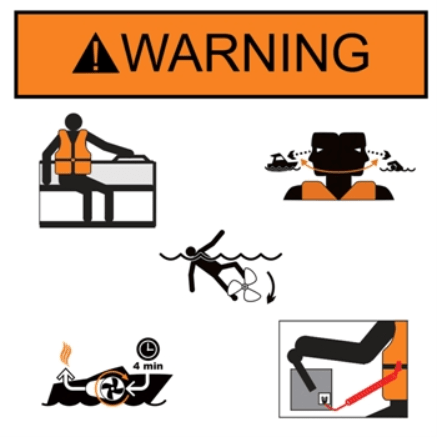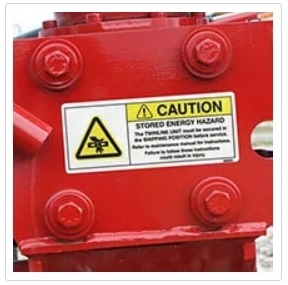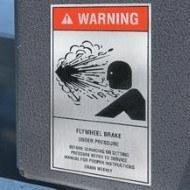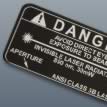The oceans are rough and as a boat owner or operator, you need to protect not only your vessel but your passengers and gear as well. Caring for a boat requires a lot of know-how and thoughtful pre-planning, and it’s important to keep your vessel compliant with all federal, state, and local regulations. In addition, performing routine maintenance and sharing important boat procedures and safety information with all passengers is critical.
In the marine world, there are a few important organizations that govern the use of vessels on the water. Three of the most important are the United States Coast Guard (USCG), the National Marine Manufacturers Association (NMMA), and the American Boat and Yacht Council (ABYC). Each of these organizations has contributed significantly to the standardization of marine labeling and continues to play a vital role in boat manufacturing, operation, and safety.
Being out on the water subjects your vessel to the harshness of salt water, waves, and a potentially wide range of temperatures. There are some useful guidelines for figuring out what warning labels are required for each boat, but it is ultimately up to the boat owner to purchase and maintain them. It’s important to make sure your warning labels are durable and suitable for the conditions, and in this post, we’ll cover the best materials available for marine applications
Safety warning labels fall into a couple of important categories: those required by government USCG regulations and those recommended by the ABYC. There are also a number of common labels that operators may include on their vessels such as suitable materials for marine toilet flushing and other warnings that can help reduce issues.
The labels required by government regulations vary based on the size of the vessel. For monohull boats that are less than 20 feet in length, there is a requirement for a capacity label stating the maximum number of people and total weight allowed. There are also requirements for ventilation and certification labels for boats that have certain configurations. Boats and yachts that are over 26 feet in length must have labels for oil and waste discharge. Consulting the detailed USCG regulations will clarify exactly what is required for a particular vessel. There may also be state or local laws that require additional warning labels. For example, the State of California requires carbon monoxide (CO) warning labels for the reboarding and helm areas.

Screenshot via ABYC
The ABYC has compiled a very useful series of free, downloadable label templates that are recommended for a number of potential hazards. They were developed alongside the NMMA and USCG using boating accident data as a reference for potential points of improvement. Based on the findings, the recommended labels cover a number of hazards for specific locations on a boat and are provided in categories based on the vessel engine type. Labels include warning information for topics such as firefighting, refrigeration, cooking appliances, propane, and power chargers.
For each of these applications, label and sign materials must be durable enough to withstand the harsh conditions in a marine environment. Here’s a look at the most durable materials for boat warning labels.

Vinyl is a durable material that is well-suited for marine applications due to its flexibility and strong resistance to moisture, sun damage, and abrasion. It is often used to fabricate flooring, seat covers and other soft surfaces on boats and yachts due to its properties. It makes a great option for marine labeling as it is also mold and mildew resistant. Vinyl labels can be placed on curved or irregular surfaces, making it easier to post these labels in required locations where there’s no appropriate flat surface to affix a rigid label. Vinyl can also be laminated with a UV-resistant material such as mylar to increase its resistance to sunlight and prolong the readability. Many of the basic labels above, especially those to be placed below deck on an interior surface, are well suited for vinyl, which has a typical exterior lifetime of up to 5 years.

The use of aluminum with an anodized surface is well-known across many industries that use heavy equipment, such as the aerospace, automotive and transportation, and marine industries. Anodized aluminum is also a frequent choice for many designs in military applications due to its durability. The anodized surface provides a protective finish that increases the durability of the surface compared to plain aluminum. It is highly resistant to saltwater, corrosion, and many typical solvents. Labels created with anodized aluminum can be made as rigid plates or as a foil label that can be affixed to a base material. These labels have a typical expected lifetime of up to 10 years and are well-suited for warning labels that are above deck and exposed to harsher conditions.

Considered one of the most durable materials available for custom labels, Metalphoto® is a highly recommended material for many types of boat labels, including warning labels. With designs sealed below a sapphire-hard anodic layer, Metalphoto labels extremely resistant to harsh marine environments and have an expected exterior lifetime of over 20 years. Metalphoto is also used in heavy industrial and military applications due to its strength. These labels can be affixed as a permanent visual and can be printed with high-resolution graphics, making it an ideal choice for detailed labeling requirements.
Finding the most suitable marine warning labels is a decision that shouldn’t be taken lightly. Due to the harsh environmental conditions boat labels are subject to, label durability is a key consideration. Choosing durable boat warning label materials ensures that important warnings remain visible and legible for years, without the need for frequent (and costly) label replacements. By choosing a suitable material for each label and placing them in all important areas of your vessel, you can maintain a safe and efficient environment for many years to come.
Our sales engineers are experts in automatic asset tracking, tagging and identification,a nd can answer all your questions. Get in touch now.
Lets Talk ›